Guitar amplifier (combo)


After some deliberation I decided to build a 10-15 W amplifier, roughly based upon the VOX AC15 design. My Elektor valve amplifier book pinpointed it as the amplifier shaping the sound of the Brit pop in the sixties and loved by many guitar players. I also got a lot of inspiration from Jheijers site who describes his VOX AC-15 clone in great detail, mechanical as well as electrical. The AC15 is from 1960, when the use of distortion and guitar effects was just beginning to catch on. It has 2 separate pre-amplifiers: one clear channel and one with a tremelo/vibrato unit. It has a characteristic sound. Some people call it bright, others somewhat tinny. My version certainly answers to that description.
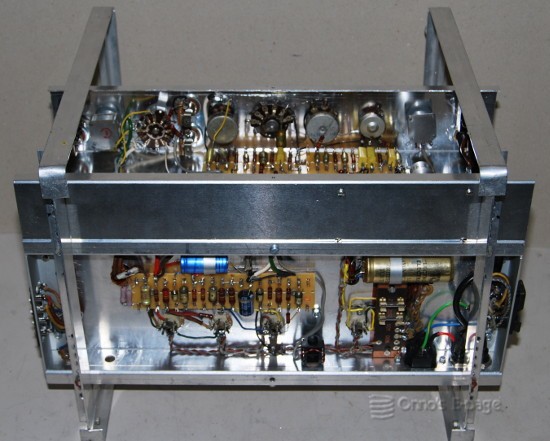
Pre-amplifier and power amplifier joined together.
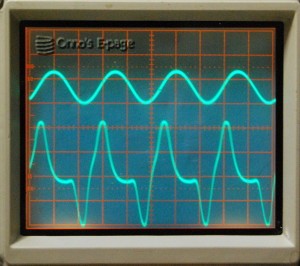
Distortion generated by cascading the pre-amps.
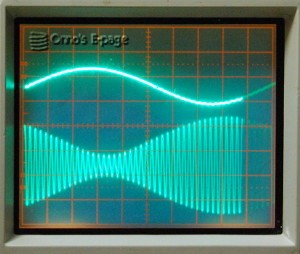
VLF oscillator signal and tremelo action.
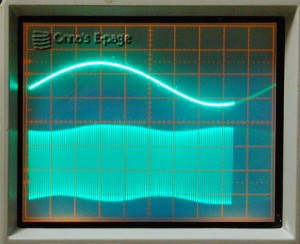
VLF oscillator signal and vibrato action.
Shallower modulation at double frequency,
Phasing effect not visible, alas.
Then I connected the load resistor and hooked up my scope. I inserted the rectifier, output valves and phase splitter and switched on again. The voltage on the buffer capacitor rose to 338V and then dropped to 286V. I checked the voltages in the pre-amplifiers and was satisfied to see that these were well within range.
Then I connected the input signal. Both pre-amps were working excellently. The “clean” channel turned out to be much more sensitive than the “tremelo/vibrato” channel. Using the “cascade” position of the clean channel, I was able to overdrive the input of the “tremelo/vibrato” channel and get a fair amount of distortion.
Then I inserted the VLF oscillator valve. and saw the output signal started wobbling. I could control the speed and depth. In the “tremelo” position of the “tremelo/vibrato” switch the amplitude variation was more visible than in “vibrato” position. Triggering to the VLF oscillator at low time base speed, my scope could visualise the action of tremelo and vibrato. Well, not completely, as the phase shifts are not visible.
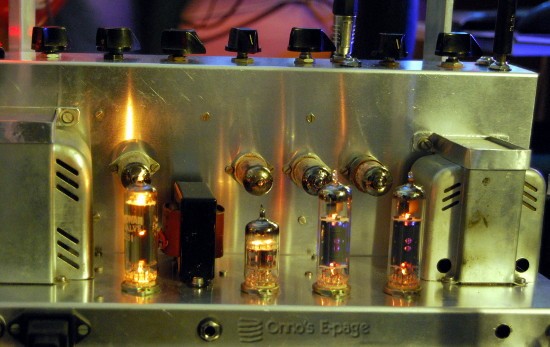
The amplifier at work.
When I switched off the lights, the inner beauty of the valves became visible: the glow of the cathode and heater and the blue haze within the output valves.
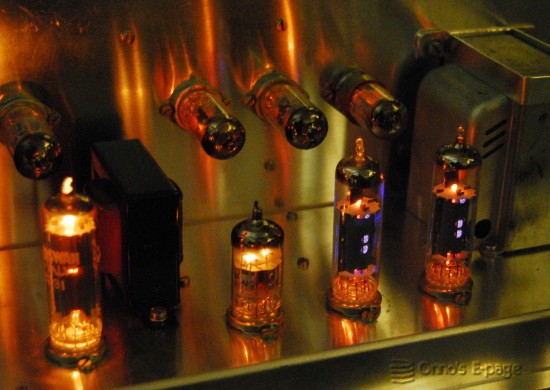
Valve veneration: red glow and blue haze in the dark.
Then it was time to start building the cabinet.
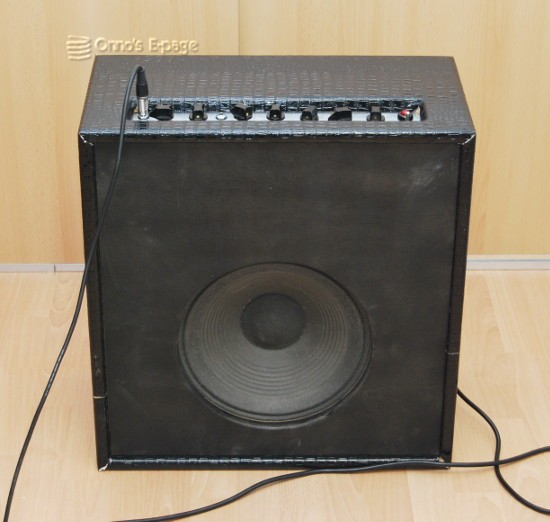
The amplifier without speaker cloth yet.
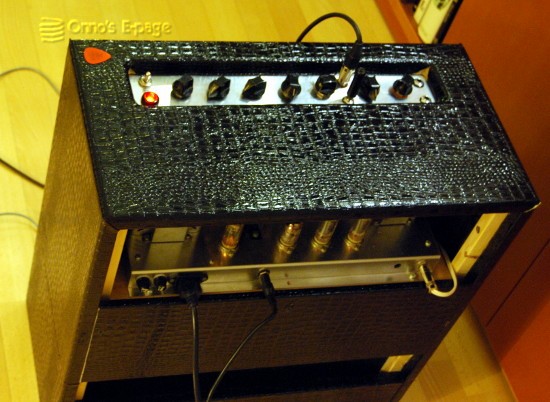
A view from the back with amp mounted in the cabinet.
A few months later I picked up the project and covered tha baffle board with speaker cloth. Before that, I replaced the simple wood screws that held the speaker by stronger M6 screws through the baffle.
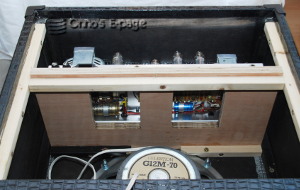
Chassis mounted in the cabinet.
At this point, I also added corner pieces to cover the corners.
Copyright © 2014, 2015 by Onno's E-page published 2014-01-18, last updated 2015-03-08